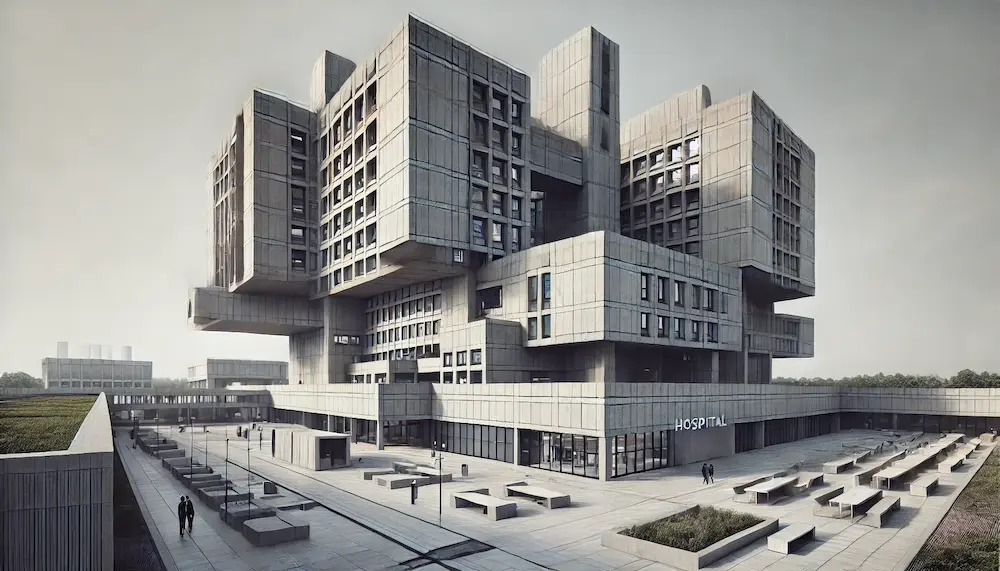Brutalist hospital architecture emerged in the mid-20th century, characterized by the use of raw concrete, geometric forms, and an emphasis on functionality. This architectural style aimed to convey strength and honesty in design, often resulting in imposing structures that prioritized utility over ornamentation.
History and Origins of Brutalist Hospital Architecture
Brutalism originated in the United Kingdom during the 1950s, gaining prominence as a response to the need for efficient, cost-effective construction in the post-war era. The term “Brutalism” is derived from the French word “béton brut,” meaning raw concrete, a material extensively used in these designs. Architects embraced this style to create public buildings, including hospitals, that were both functional and symbolically robust.
Key Features of Brutalist Hospital Architecture
- Exposed Concrete: The hallmark of Brutalist architecture is the extensive use of raw, unfinished concrete, giving buildings a rugged and monumental appearance.
- Geometric Forms: Designs often feature bold, angular shapes and repetitive modular elements, creating a sense of order and strength.
- Functional Design: Brutalist hospitals prioritize utility, with layouts designed to facilitate efficient movement and operation within the facility.
- Minimal Ornamentation: Decorative elements are minimal or absent, focusing attention on the building’s form and materials.
Notable Examples of Brutalist Hospitals
- Prentice Women’s Hospital (Chicago, USA): Designed by Bertrand Goldberg and completed in 1975, this hospital featured a distinctive quatrefoil design with a concrete exterior. Despite its architectural significance, it was demolished in 2014.
- Sarah Kubitschek Hospital (Brasília, Brazil): Designed by João Filgueiras Lima, known as ‘Lelé’, this hospital exemplifies Brazilian Brutalism with its emphasis on structural technique and exposed concrete.
- Woodhull Medical Center (Brooklyn, New York, USA): Opened in 1982, this hospital is a notable example of Brutalist architecture in healthcare facilities.
Considerations When Choosing Brutalist Hospital Architecture
- Aesthetic Perception: Brutalist architecture often evokes strong opinions, with some viewing it as bold and honest, while others perceive it as harsh or uninviting.
- Maintenance: Exposed concrete surfaces can be prone to staining and weathering, requiring regular maintenance to preserve their appearance.
- Adaptability: The rigid structural designs of Brutalist buildings may pose challenges when modifications or expansions are needed to accommodate evolving healthcare requirements.
Conclusion
Brutalist hospital architecture represents a significant period in architectural history, reflecting a commitment to functionality and material honesty. While opinions on its aesthetic value vary, its impact on the design of healthcare facilities is undeniable, leaving a legacy of structures that emphasize strength and utility.
